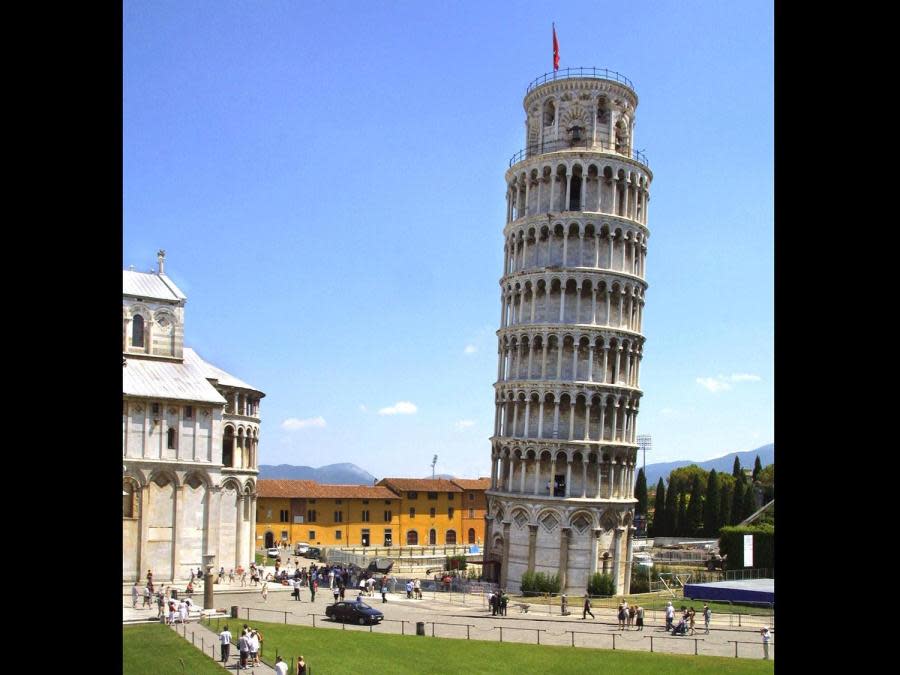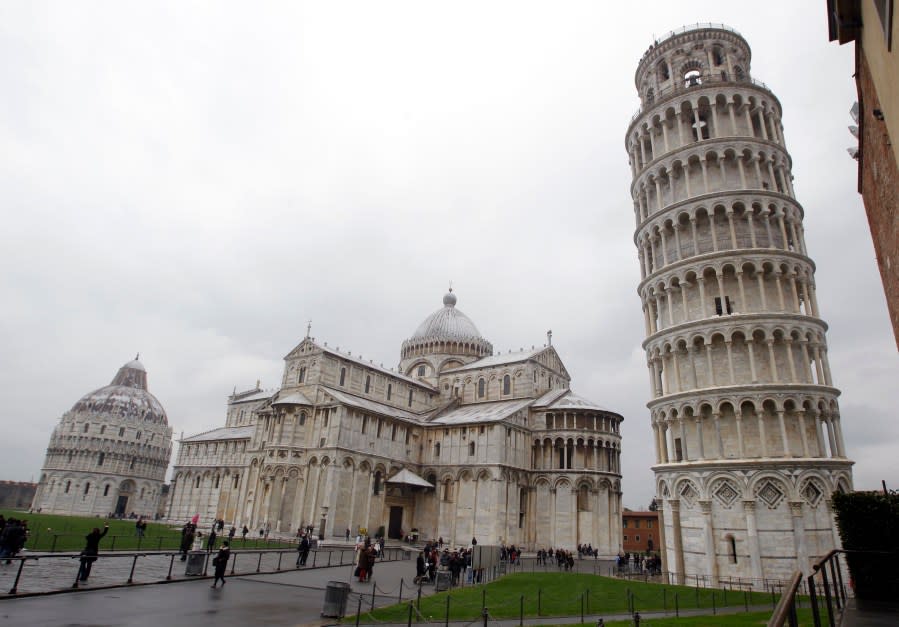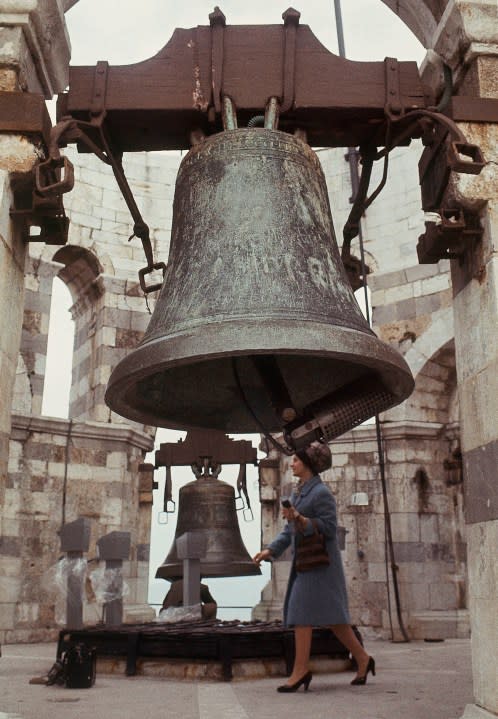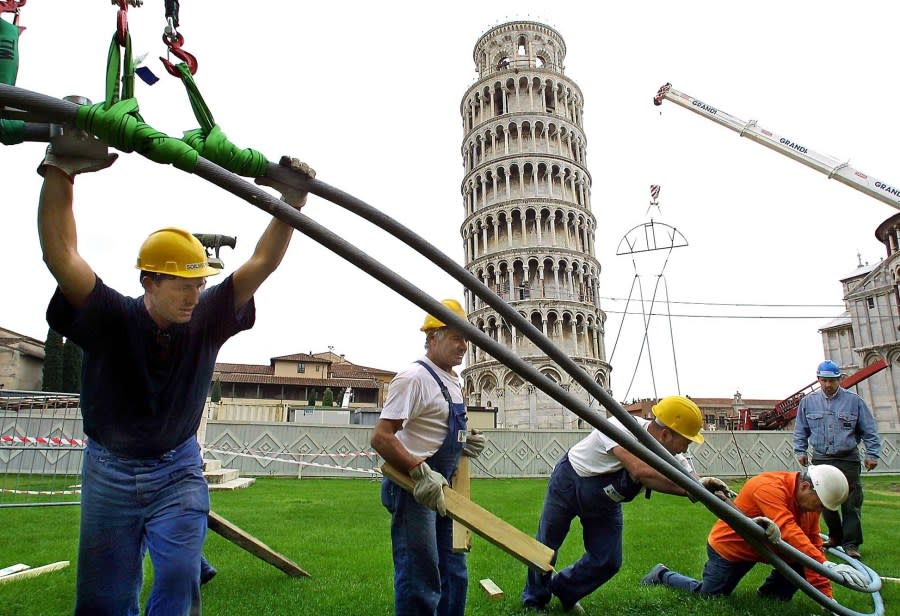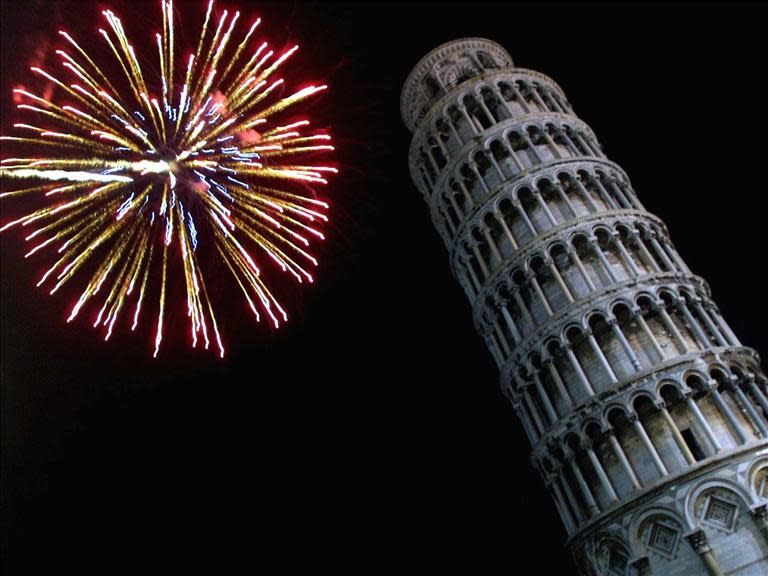PISA, ITALY (WHTM) — No, it wasn’t supposed to lean.
The Tower of Pisa (Torre di Pisa) is the freestanding bell tower, or campanile, of Pisa Cathedral. It took almost 200 years to complete.
Get daily news, weather, breaking news and alerts straight to your inbox! Sign up for the abc27 newsletters here
The foundations for the tower were laid on August 9, 1173, and work on the first floor began on the 14th. But by the time they were working on the second floor in 1178, something had gone horribly wrong. The tower was beginning to lean to the south. Actually, two things had gone horribly wrong: nobody had realized the soil underneath the tower was soft and unstable due to the area’s high water table, which in turn meant the foundation they’d built, only ten feet deep, was too shallow to keep the tower straight.
-
Leaning Tower of Pisa. This views shows how they adjusted the building during construction. (AP) -
The Leaning Tower of Pisa (Torre di Pisa) is seen at right next to the medieval cathedral of Pisa, in Piazza dei Miracoli Square, in Pisa, Italy, Sunday, Jan. 2, 2012. On Thursday, Nov. 22, 2018, after more than two decades of efforts to straighten it, engineers say the famed Tuscan bell tower has recovered four centimeters (1.57 inches) and is in better structural health than predicted. (AP Photo/Luca Bruno) -
Seen here is a close-up of the bells in the Leaning Tower of Pisa in Pisa, Italy, February 5, 1966. (AP Photo) -
Construction workers remove steel cables known as “suspenders” from the base Leaning Tower of Pisa, central Italy, Tuesday, May 15, 2001, which had been placed in 1998 to support the tower during reinforcement excavations. Four cables -100 meters long and weighing 4 tons each -, had been placed to balance the tower during excavation in case of a possible collapse. The tower is expected to open to the public in November 2001. (AP Photo/Fabio Muzzi) -
Tower at night (AP)
About this time Pisa got itself involved in a series of wars, which continued on and off for almost a century. Construction on the tower stopped during this time, which worked in its favor. The long pause allowed the soil under the tower to pack down a bit.
Eventually, work resumed in the 1260s. To compensate for the tilt, they built the remaining floors with one side slightly higher than the other. As a result, the tower not only leans, it curves.
11/23 is Fibonacci Day!
The tower was finally completed in 1372, with the addition of the bell tower. (Yes, there are bells in the bell tower-but they don’t ring them anymore. Each bell weighs thousands of pounds, and officials worry having them sway back and forth will make the tower tilt more.) The curve built into the tower during the later years of construction actually worked-the center of gravity at the top of the tower was inside the building, which meant it wasn’t going to fall-at least, not immediately.
But over the centuries the tilt progressively worsened. By the 1990s the tower was tilting an alarming 5.5 degrees. The tower was closed to the public for ten years, while the tower underwent a massive rescue operation. Counterweights were placed on the north side of the tower to shift its center of gravity, while steel cables were attached to the building to keep it from falling. Then workers dug wells under the foundations to drain water. The foundation was reinforced with 50-foot-long concrete pillars. Then they slowly pulled on the cables to “untilt” the tower back into the safe zone-around four degrees. In 2001 the tower was declared stabilized and reopened to the public.
Copyright 2024 Nexstar Media, Inc. All rights reserved. This material may not be published, broadcast, rewritten, or redistributed.
For the latest news, weather, sports, and streaming video, head to ABC27.







